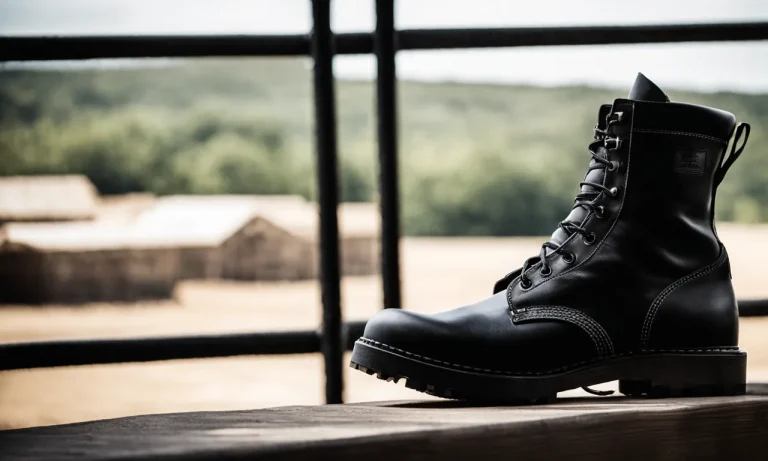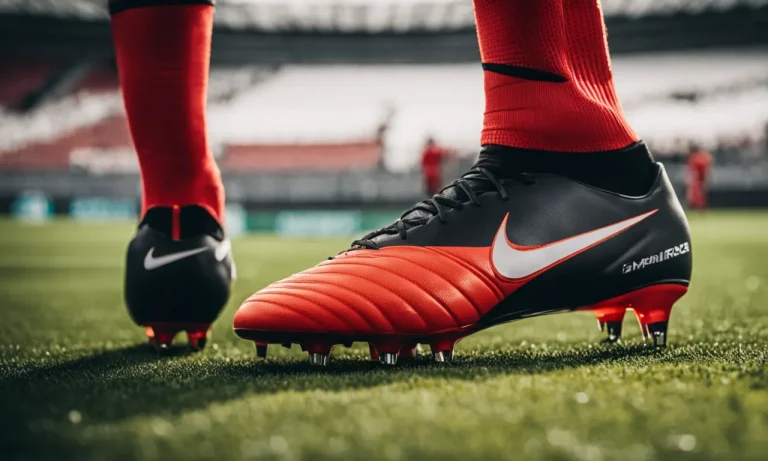Rear entry ski boots were all the rage in the 70s and 80s, but have since fallen out of favor with most skiers. If you’re considering dusting off your old rear entry boots or buying a used pair, you may be wondering – are rear entry ski boots dangerous?
If you’re short on time, here’s the quick answer: rear entry ski boots are generally considered less safe than front entry boots, but they’re not necessarily dangerous if used properly under the right conditions.
Their looser fit and flex make them better suited to beginner and recreational skiers than experienced skiers looking to ski aggressively.
In this comprehensive guide, we’ll take an in-depth look at rear entry ski boots, their pros and cons, safety considerations, and whether they’re still a viable option in today’s skiing landscape.
What Are Rear Entry Ski Boots?
Rear entry ski boots, also known as rear-entry boots, are a type of ski boot that differs from the traditional front entry boots commonly used by skiers. Unlike front entry boots, which open in the front and require the skier to slide their foot in from the front, rear entry ski boots have a hinged opening at the back of the boot.
This allows skiers to easily slide their foot into the boot from the rear, similar to putting on a pair of shoes.
Design and Features
Rear entry ski boots are designed to be user-friendly and convenient. They feature a single buckle or closure mechanism, typically located on the top of the boot, which allows for quick and easy adjustment.
This simplicity in design makes them popular among beginner skiers or those who prefer a hassle-free experience when gearing up for a day on the slopes.
Additionally, rear entry ski boots often have a softer flex compared to front entry boots, providing a more forgiving and comfortable fit. They are also known for their excellent rearward range of motion, allowing for increased flexibility and control while skiing.
When Were They Popular?
Rear entry ski boots gained popularity in the 1980s and 1990s. During this time, they were widely embraced by skiers due to their ease of use and the convenience they provided. Many skiers appreciated the fact that they could quickly slip into their boots without the need for extensive adjustments or struggling with stiff front entry designs.
Decline in Popularity
Despite their initial popularity, rear entry ski boots have seen a decline in recent years. This can be attributed to advancements in technology and the introduction of more modern boot designs. Front entry boots have become the preferred choice for many skiers, as they offer a higher level of performance and customization options.
Front entry boots provide a more precise fit, allowing for better power transfer and control on the slopes. They also offer improved support and stability, which is particularly important for advanced skiers who push the limits of their abilities.
While rear entry boots still have their place in the market, they are no longer as prevalent as they once were.
It is important for skiers to choose the type of ski boot that best suits their skill level, preferences, and skiing style. Whether opting for rear entry or front entry boots, it is crucial to ensure a proper fit and proper adjustment for optimal safety and performance on the slopes.
The Pros and Cons of Rear Entry Boots
Pros
Rear entry ski boots have gained popularity among skiers for several reasons:
- Convenience: One of the main advantages of rear entry boots is their convenience. Unlike traditional front entry boots, rear entry boots can be easily slipped on and off, making them ideal for skiers who value efficiency and ease of use.
This feature is particularly beneficial for beginners or those who struggle with mobility.
- Comfort: Rear entry boots are often praised for their comfort. With a wider opening at the back, these boots provide a more forgiving fit and allow for greater flexibility. This can be particularly advantageous for skiers with wider feet or those who experience discomfort in the toe box area.
- Price: Rear entry boots are generally more affordable compared to their front entry counterparts. This makes them an attractive option for budget-conscious skiers who still want to enjoy the slopes without breaking the bank.
Cons
While rear entry boots have their advantages, they also come with some downsides:
- Performance: Rear entry boots may not provide the same level of performance as front entry boots, particularly for more advanced skiers. The design of rear entry boots can affect the skier’s ability to transfer power and control to the skis, which can impact overall performance on the slopes.
- Customization: Rear entry boots may offer limited customization options compared to front entry boots. Skiers who require a highly personalized fit may find it challenging to achieve the same level of customization with rear entry boots.
- Availability: While rear entry boots are still available on the market, they may be less common compared to front entry boots. This can make it more difficult to find the right rear entry boot that suits your specific needs and preferences.
It’s important to note that the pros and cons of rear entry boots may vary depending on individual preferences, skiing ability, and foot anatomy. It’s recommended to try on different types of boots and consult with a professional boot fitter to determine the best option for your skiing needs.
Are Rear Entry Boots Safe for Skiing?
When it comes to skiing, the choice of ski boots is crucial for both comfort and safety. One type of ski boot that has gained some attention is the rear entry boot. These boots have a unique design that allows for easy entry and exit, but many skiers wonder if they are truly safe to use on the slopes.
Loose fit risks
One potential concern with rear entry boots is their looser fit compared to traditional ski boots. Some skiers worry that this may compromise their control and stability while skiing. However, it’s important to note that modern rear entry boots have made significant improvements in recent years.
Manufacturers have incorporated advanced materials and design features to provide a more secure fit and better performance. Additionally, ski boot fitting techniques have also improved, allowing skiers to find the right size and fit for their feet.
Lack of forward flex
Another aspect that raises questions about the safety of rear entry boots is their limited forward flex. Traditional ski boots provide a greater range of motion in the ankle, allowing skiers to flex forward and maintain a balanced position while skiing.
Rear entry boots, on the other hand, have a more restricted range of motion. While this may affect advanced skiers who require precise movements, it may not be a significant issue for recreational skiers and beginners.
Best uses for safety
While rear entry boots may not be suitable for everyone, they do have their advantages and can be used safely in certain situations. They are often more comfortable and easier to put on and take off, making them a popular choice for recreational skiers or those who prioritize convenience.
Additionally, rear entry boots are known for their excellent insulation and warmth, making them ideal for cold weather skiing.
It’s important to note that the safety of any ski boot ultimately depends on its proper fit and compatibility with the skier’s skill level and skiing style. It is recommended to consult with a professional boot fitter who can assess your needs and recommend the most suitable boot for you.
Remember, properly fitting boots, regardless of the entry style, are essential for both safety and performance on the slopes.
For more information on ski boot safety and fitting, you can visit websites like skimag.com or powder.com which provide valuable insights and resources for skiers of all levels.
Tips for Skiing Safely in Rear Entry Boots
When it comes to skiing in rear entry boots, there are a few key tips to keep in mind to ensure your safety on the slopes. By considering your skill level and terrain, looking for modern rear entry models, getting the right fit, adjusting the flex, and using appropriate bindings, you can enjoy a safe and comfortable skiing experience.
Consider your skill level and terrain
Before hitting the slopes in rear entry boots, it’s important to assess your skill level and the type of terrain you’ll be skiing on. Rear entry boots are generally suitable for intermediate to advanced skiers who are comfortable with the added flexibility and range of motion they provide.
If you’re a beginner or will be skiing on challenging terrain, it may be best to stick with traditional ski boots.
Look for modern rear entry models
Not all rear entry boots are created equal. It’s important to look for modern rear entry models that have been designed with safety and performance in mind. These boots often incorporate advanced materials and technologies that enhance comfort, support, and control.
By investing in a well-designed pair of rear entry boots, you can minimize the risk of injury and maximize your skiing experience.
Get the right fit
Proper fit is crucial when it comes to ski boots, regardless of the entry style. When choosing rear entry boots, make sure they fit snugly but not too tight. Your toes should have some wiggle room, and your heel should be securely held in place.
It’s also a good idea to consult with a professional boot fitter who can help ensure the perfect fit for your feet.
Adjust the flex
Rear entry boots often allow for adjustable flex, which refers to the stiffness of the boot. Depending on your skiing style and preference, you can adjust the flex to provide more support or increased flexibility.
Finding the right balance will not only enhance your comfort but also improve your performance on the slopes.
Use appropriate bindings
Pairing your rear entry boots with the right bindings is essential for safety and performance. Make sure the bindings are compatible with your boots and are properly adjusted to your weight, skill level, and skiing style. This will ensure optimal control, stability, and release when needed.
Remember, while rear entry ski boots offer certain advantages, such as convenience and comfort, it’s important to ski within your ability and always prioritize safety. By following these tips and using common sense on the slopes, you can enjoy a fantastic skiing experience with rear entry boots.
The Verdict: Are Rear Entry Boots Still Worth It?
When it comes to ski boots, there has been a long-standing debate about the safety and effectiveness of rear entry boots. Rear entry boots, as the name suggests, have a hinged design that allows skiers to enter the boot from the back rather than the side.
While these boots were popular in the past, the question remains: are they still worth it?
For beginners and recreational skiers
For beginners and recreational skiers, rear entry boots can still be a viable option. These boots offer convenience and ease of use, making them a popular choice for those who are just starting out on the slopes.
The rear entry design allows for quick and easy entry and exit, eliminating the need to struggle with traditional front entry boots. This can be particularly beneficial for beginners who may be less experienced in putting on and taking off ski boots.
Rear entry boots also tend to be more forgiving and comfortable, with a softer flex that is easier on the legs and feet. This can be especially important for recreational skiers who may not be pushing the limits of their skiing abilities.
Additionally, many rear entry boots come with adjustable features, such as buckles and straps, allowing for a customized fit that can enhance comfort and performance on the slopes.
For experienced, aggressive skiers
For experienced, aggressive skiers who are looking to push their limits on the slopes, rear entry boots may not be the best choice. These skiers require a higher level of performance and precision, which is typically offered by stiffer, more responsive front entry boots.
Front entry boots provide better power transmission and control, allowing for more aggressive turns and maneuvers.
Furthermore, rear entry boots may not provide the same level of support and stability that aggressive skiers need when skiing at high speeds or tackling challenging terrain. The hinged design of rear entry boots can lead to a loss of power and control, which can be detrimental in demanding skiing situations.
It is worth noting that ski boot technology has come a long way in recent years, and there are now front entry boots that offer the same level of convenience and ease of use as rear entry boots. These boots feature innovative designs that allow for quick and easy entry and exit without compromising on performance or safety.
Conclusion
Rear entry ski boots may not be the gold standard anymore, but they still have a place under certain circumstances. For beginners and casual skiers sticking to green runs, they can offer more comfort and convenience compared to front entry boots.
However, experienced skiers looking to charge down blacks and double diamonds are better off with the support and forward flex of modern front entry boots.
At the end of the day, choosing ski boots comes down to personal preferences and skiing style. While rear entry boots do carry some inherent risks, they can still be skied safely with the right precautions.
If you have a pair of vintage rear entry boots collecting dust in your closet, break them out and relive those retro days on the slopes. Just take it slow until you get used to them again!






